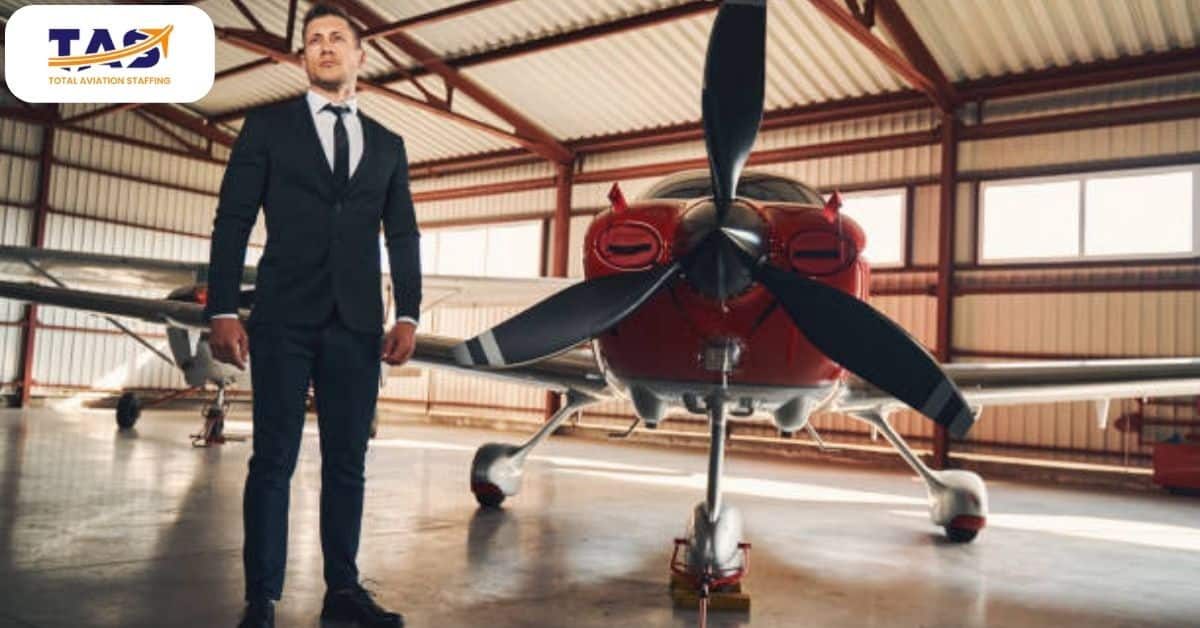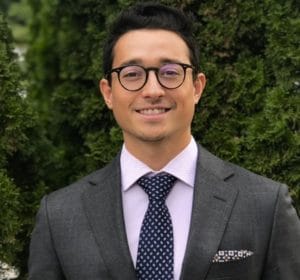Soaring through the sky requires an exceptional leader at the helm. When it comes to hiring a Chief Pilot, precision is paramount. Join us on an exhilarating journey as we provide you with a comprehensive overview of the Chief Pilot hiring process.
From assessing technical expertise to evaluating soft skills and leadership qualities, we’ll guide you through the skies of talent acquisition. Discover the secrets to assembling an outstanding flight team and ensuring a safe and seamless aviation experience. Buckle up, because the Chief Pilot hiring process is about to take off!
Understanding the Role: Key Responsibilities and Qualifications
As a hiring manager, understanding the role of a Chief Pilot is crucial to ensure the selection of qualified candidates who can fulfill the key responsibilities associated with this position.
Below are important key responsibilities and qualifications to consider when searching for a suitable candidate:
- Key Responsibilities:
- Oversee flight operations, maintaining the highest standards of safety, efficiency, and professionalism.
- Lead, manage, and directed pilots and Base Chief Pilots, promoting a culture of excellence.
- Collaborate with the Director of Operations to establish training standards and scheduling.
- Develop and maintain company policies, procedures, and publications related to flight operations.
- Ensure compliance with Federal Aviation Regulations and company policies, investigating incidents when necessary.
- Screen, interview, and recommend hiring potential pilots.
- Provide leadership, supervision, and performance appraisals, fostering pilot development.
- Qualifications:
- Minimum 5 years of experience as a Pilot in Command (PIC).
- Hold a valid Pilot License and 1st Class Medical certification.
- Excellent knowledge of Federal Aviation Regulations and flight operations manuals.
- Strong leadership, communication, and problem-solving skills.
- Ability to work in changing environments, including travel and overnight stays.
As you embark on the journey to find the perfect Chief Pilot, remember that a dash of wit can be the icing on the cake. So, soar high in your search, aiming for candidates with wings of experience and minds sharp as the edge of a wingtip. Find someone who can navigate through stormy skies with grace, leading a team with the finesse of a well-executed landing. Remember, in the realm of aviation, the key is not just to fly, but to fly with style and finesse.

Developing an Effective Job Description: Attracting Top Talent
Creating a compelling job description for the Chief Pilot role is vital to attract top-tier candidates and facilitating a successful recruitment process. It serves as a critical tool in capturing the attention of qualified professionals who possess the necessary skills and experience to excel in this leadership position.
Below are key details to include when crafting a job description:
- Clearly define the role’s title, location, and employment type (e.g., full-time, direct hire).
- Highlight the company’s commitment to providing a luxury private jet travel experience.
- Emphasize the focus on client service and the goal of delivering the ultimate client experience.
- Outline the main responsibilities, including overseeing flight operations, ensuring safety, and maintaining professional standards.
- Specify the collaboration with the Director of Operations in establishing training standards and schedules.
- Mention the development and maintenance of company policies, procedures, and publications related to flight operations.
- State the importance of compliance with Federal Aviation Regulations and company policies.
- Highlight opportunities for leadership, pilot development, and collaboration with other departments.
- Specify the required qualifications, such as a minimum of 5 years of PIC experience, a valid Pilot License, and 1st Class Medical certification.
- Mention any additional preferred qualifications or desired skills.
Craft an enticing job description to attract top Chief Pilot talent and elevate your flight team to new heights. With comprehensive information and engaging details, find the perfect match who embodies your company’s values and delivers excellence in safety and professionalism. And get ready to take off on a smooth journey toward success!

Conducting a Thorough Interview Process: Assessing Skills and Fit
To build a successful aviation team, conducting a thorough interview process for Chief Pilot candidates is essential. It allows you to assess their experience, knowledge of regulations, leadership skills, and commitment to the company’s mission. By selecting the most qualified individuals, you’ll take off towards excellence, ensuring safety, professionalism, and a culture of continuous growth.
Consider the following suggestions to conduct a successful interview process for Chief Pilot candidates:
- Conduct a preliminary screening interview to assess basic qualifications and experience.
- Schedule a panel interview with key stakeholders to evaluate leadership and communication skills.
- Use scenario-based questions to assess problem-solving abilities and decision-making processes.
- Arrange a practical assessment, such as a flight simulator session, to evaluate technical skills.
- Include a cultural fit interview to determine alignment with the company’s values and work environment.
- Request references from previous employers to verify performance and professionalism.
As you embark on the interviewing journey to find your high-flying Chief Pilot, remember that the sky’s the limit when it comes to selecting the best. With a thorough interview process, you’ll be able to separate the soaring eagles from the flightless pigeons. So ask the right questions, and watch as the perfect candidate takes off, propelling your aviation team to new heights of success, safety, and a culture that soars with a touch of wit and professionalism.

Evaluating Experience and Credentials: Ensuring Compliance and Safety
In the aviation industry, a thorough evaluation of candidates’ experience and credentials is paramount to uphold compliance and safety standards. It ensures that only qualified individuals who meet the requirements are entrusted with crucial responsibilities in maintaining the highest levels of safety and regulatory adherence.
Consider the following key points when evaluating the experience and credentials of candidates:
- Verify a minimum number of flight hours and experience as a Pilot in Command (PIC).
- Assess the candidate’s knowledge of applicable Federal Aviation Regulations (FARs) and industry guidelines.
- Evaluate their proficiency in operating the specific aircraft type relevant to the position.
- Consider their experience in managing flight operations, crew coordination, and emergencies.
- Review their safety records, incident reports, and adherence to standard operating procedures.
- Verify the validity of their licenses, certifications, and medical clearances.
- Assess their participation in ongoing professional development, training programs, and industry conferences.
- Evaluate their experience in conducting risk assessments and implementing safety management systems.
When it comes to evaluating experience and credentials in the aviation industry, precision is the name of the game. By delving into flight hours, regulations, safety records, and proficiency in handling aircraft, you’ll separate the “fly-by-night” candidates from the true aviation virtuosos. So aim high and let the wings of experience guide you as you choose the crème de la crème of qualified individuals.

Assessing Soft Skills and Leadership Qualities: Building a Strong Team
Identifying candidates with the essential attributes to excel in the Chief Pilot role requires a thorough assessment of their soft skills and leadership qualities. This evaluation is crucial in selecting individuals who demonstrate the necessary attributes to lead effectively and succeed in the position.
Here are some methods to evaluate these attributes:
- Behavioral Interviews: Ask candidates to share examples of past experiences that demonstrate their leadership, communication, problem-solving, and teamwork skills. Look for specific actions and outcomes.
- Role-play or Simulations: Create scenarios relevant to the Chief Pilot role and observe how candidates navigate and handle challenging situations. This helps assess their decision-making, adaptability, and problem-solving abilities.
- Reference Checks: Speak with previous supervisors or colleagues to gain insights into a candidate’s soft skills, leadership style, and ability to collaborate effectively.
- Group Exercises: Organize group activities where candidates must collaborate and solve problems as a team. Observe their ability to communicate, listen, and contribute to collective goals.
- Emotional Intelligence Assessments: Employ tools or assessments that measure emotional intelligence to evaluate a candidate’s self-awareness, empathy, and ability to manage emotions.
- Leadership Case Studies: Present candidates with real or hypothetical scenarios that require them to analyze and provide strategic solutions. Assess their leadership approach, critical thinking, and communication skills.
- Panel or Stakeholder Interviews: Involve multiple stakeholders, including executives and team members, to gain diverse perspectives on a candidate’s leadership potential and soft skills.
Key soft skills and leadership qualities include:
- Strong communication skills
- Excellent problem-solving abilities
- Demonstrated leadership qualities
- Adaptability and flexibility
- Attention to detail and meticulousness
- Exceptional organizational and time management skills
- Emotional intelligence under pressure
- Collaborative mindset
As you embark on the mission to find the perfect Chief Pilot, remember that evaluating soft skills and leadership qualities is like navigating through turbulent skies with finesse. By combining various assessment methods, you’ll unveil the hidden gems that possess the right balance of technical prowess and inspirational leadership. With their exceptional communication, problem-solving, and collaboration skills, your flight operations will soar to new heights of safety, professionalism, and success. Buckle up and get ready to welcome the Chief Pilot who will lead your team to new horizons!

In Conclusion
Now that you’ve gained an insider’s perspective on the Chief Pilot hiring process, it’s time to spread your wings and soar to new heights. By carefully evaluating technical proficiency, assessing soft skills and leadership qualities, and conducting a thorough interview process, you can assemble a top-tier flight team that will navigate the skies with precision and finesse.
Remember, finding the perfect Chief Pilot is like finding the missing piece of a puzzle – it completes the picture of a successful aviation operation. With the right Chief Pilot at the helm, your organization is destined to reach new horizons and embrace the true essence of flight excellence.
Ready to take your aviation team to new heights? Partner with Total Aviation Staffing, the leading aerospace staffing agency, and gain access to top-tier talent. From Direct-Hire placements to Executive and Technical searches, our specialists will deliver high-caliber candidates tailored to your specific needs. Don’t settle for anything less than excellence in your team. Contact Total Aviation Staffing today and let us help you find the perfect Chief Pilot and other aviation professionals to elevate your operation. Experience the difference with our unrivaled staffing solutions. Reach for the skies with Total Aviation Staffing!


